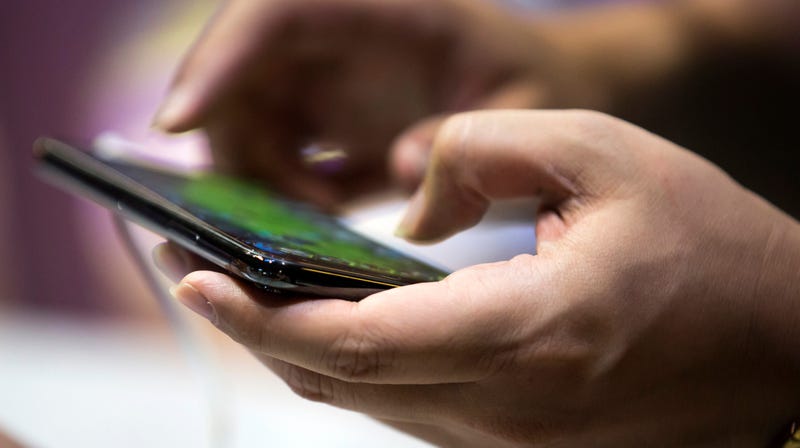
Teens and young adults are in the midst of a unique mental health crisis, suggests a new study out Thursday. It found that rates of depressive episodes and serious psychological distress have dramatically risen among these age groups in recent years, while hardly budging or even declining for older age groups.
Lead author Jean Twenge, a 47-year-old professor of psychology at San Diego State University, has spent much of her career studying the attitudes and beliefs of younger generations. Most recently, in 2017, Twenge published a pop-science book laying out her central argument that teens and young adults coming of age are especially lonely and disconnected, thanks in part to the growing abundance of social media and devices like smartphones. Her book is titled iGen: Why Today’s Super-Connected Kids Are Growing Up Less Rebellious, More Tolerant, Less Happy—and Completely Unprepared for Adulthood.
Twenge’s book and work had has its detractors, who argue that her theory is supported by cherry-picked and weak evidence, or that other factors aside from smartphones could be the real culprit behind a legitimate rise in teen depression. A new study, published in the Journal of Abnormal Psychology and authored by Twenge and others, seems poised to rebut at least some of these criticisms.
Twenge and her team looked at data from the National Survey on Drug Use and Health, a nationally representative survey of Americans’ lifestyle habits. In total, they looked at more than 600,000 Americans across different age groups who took the survey from 2005 to 2017.
Between those years, they tracked the rate of reported episodes of major depression and serious psychological distress, measured by how people responded to questions such as whether they ever felt “so sad or depressed that nothing could cheer them up.” They also looked at rates of suicide-related outcomes, such as how often people thought about suicide, formed plans to carry it out, and actually attempted it.
Advertisement
For nearly all age groups over 18, the rate of severe distress experienced in the past month rose between 2008 and 2017 (2008 was the first year that rates of distress in adults were tracked). But this rise was much more dramatic among young adults.
In 2008, for instance, around 5 percent of adults between the ages of 30 and 34 experienced serious distress, while 6.5 percent of the same group said the same in 2017—a 33 percent jump. Meanwhile, just over 8 percent of 20- and 21-year-olds experienced distress in 2008, compared to 14.4 percent in 2017—a 78 percent relative increase.
A similar pattern held true for episodes of major depression and suicide-related outcomes: Teens and young adults had higher rates of depression in 2017 than they did a decade before, while the rate of depression for most age groups over 30 was actually lower in 2017 compared to 2009 (seniors were the exception).
Advertisement
Younger people tend to experience depression and other mood problems more than older people. But the findings suggest that younger people today are dealing with more depression and distress than younger people were a decade ago. And though some of this melancholy could be due to cultural factors that affect everyone to an extent, it’s hit the youngest hardest.
The study can’t provide any direct evidence as to what’s causing this disparity, which is a common critique of Twenge’s work. But according to Twenge, it does seem to rule out that factors like the Great Recession are especially relevant.
“If economic causes were to blame, it doesn’t make much sense that depression would peak in 2017 when the unemployment rate was at record lows, and be lower during the recession years when unemployment was high,” she told Gizmodo. “In addition, if economic factors were responsible, you’d expect that the increase would be largest among working-age adults, who are directly impacted by shifts in the job market. Instead, it’s the youngest who show the largest increases in depression, including 12- to 17-year-olds, who are spared the direct effects of worry over supporting a family during poor economic times.”
Advertisement
Twenge and her co-authors argue that since this rise in depression began in 2012, right around the time smartphones started becoming an universal accessory, they and similar devices have to be playing a large role. They could be making it even harder for teens and young people to sleep—lack of sleep being a well-known driver of poorer mental health—or limiting the amount of face-to-face social interaction people get with their friends and family. And while these same effects might also be happening to millennials and older generations, the authors say, they’d be more influential for people in their formative years.
Regardless of the exact causes, it’s known that depressed and suicidal teens are more likely to suffer as adults, so this large wave of depression among the young could cause ripples years or even decades down the road. And since there doesn’t seem to be any end to the rise, at least right now, things could get even worse.
Twenge doesn’t discount the value of technology, even in helping people stay mentally healthy, but she said there should be more work done to understand how these devices could be harming young people and how to better prevent that harm. In the immediate future, she said, all of us, but especially teens, could probably stand to leave our phones out of the bedroom, turn off our devices a hour before bed, and limit our screen time outside of work or school to two hours a day or less.
Advertisement
If you or someone you know is having a crisis, please call the National Suicide Prevention Lifeline at 800-273-8255, or text the Crisis Text Line at 741-741.
https://gizmodo.com/teens-and-young-adults-are-more-depressed-now-than-in-t-1833295562
2019-03-14 19:15:00Z
52780239291444
Bagikan Berita Ini














0 Response to "Teens and Young Adults Are More Depressed Now Than in the Mid-2000s - Gizmodo"
Post a Comment